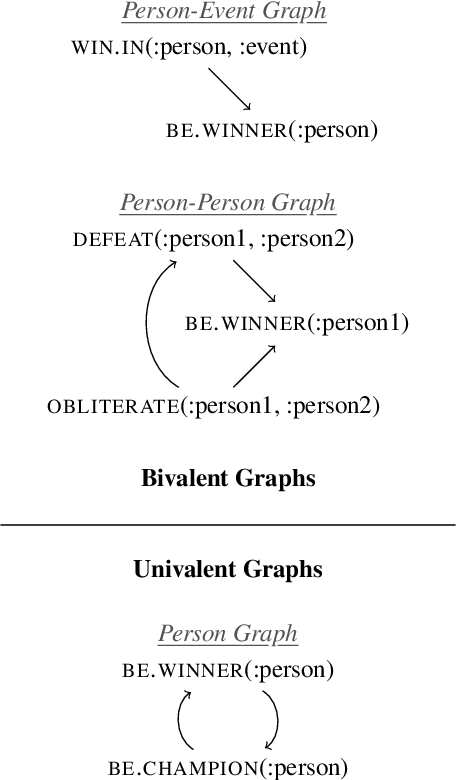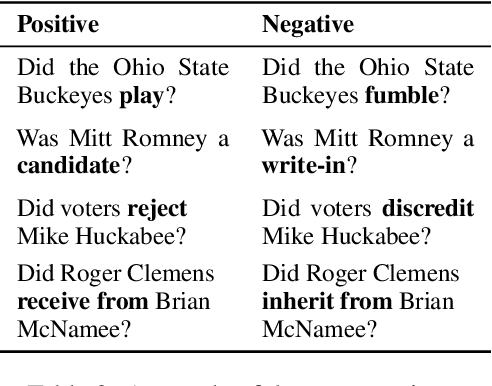Multivalent Entailment Graphs for Question Answering
Paper and Code
Apr 16, 2021



Drawing inferences between open-domain natural language predicates is a necessity for true language understanding. There has been much progress in unsupervised learning of entailment graphs for this purpose. We make three contributions: (1) we reinterpret the Distributional Inclusion Hypothesis to model entailment between predicates of different valencies, like DEFEAT(Biden, Trump) entails WIN(Biden); (2) we actualize this theory by learning unsupervised Multivalent Entailment Graphs of open-domain predicates; and (3) we demonstrate the capabilities of these graphs on a novel question answering task. We show that directional entailment is more helpful for inference than bidirectional similarity on questions of fine-grained semantics. We also show that drawing on evidence across valencies answers more questions than by using only the same valency evidence.
 Add to Chrome
Add to Chrome Add to Firefox
Add to Firefox Add to Edge
Add to Edge